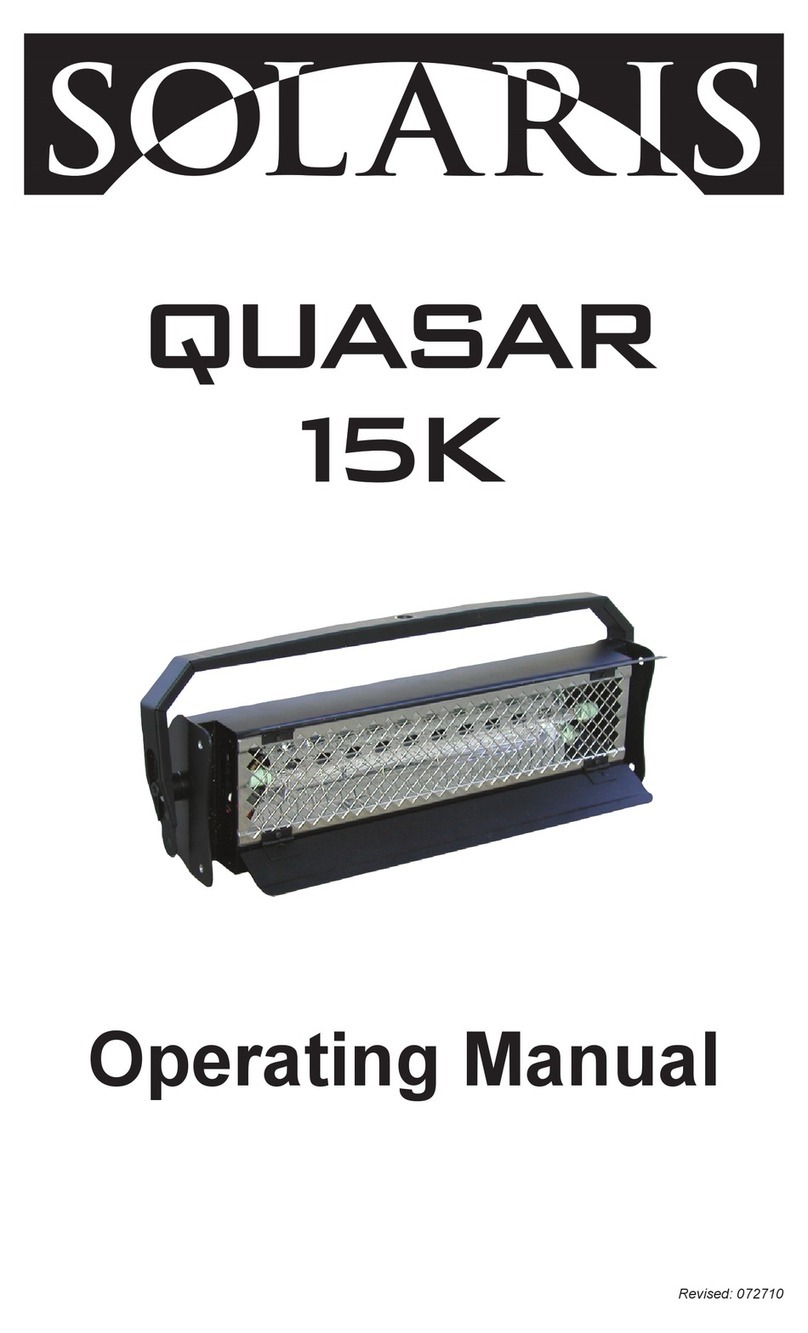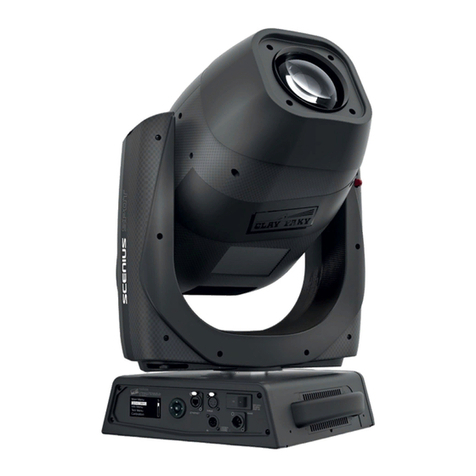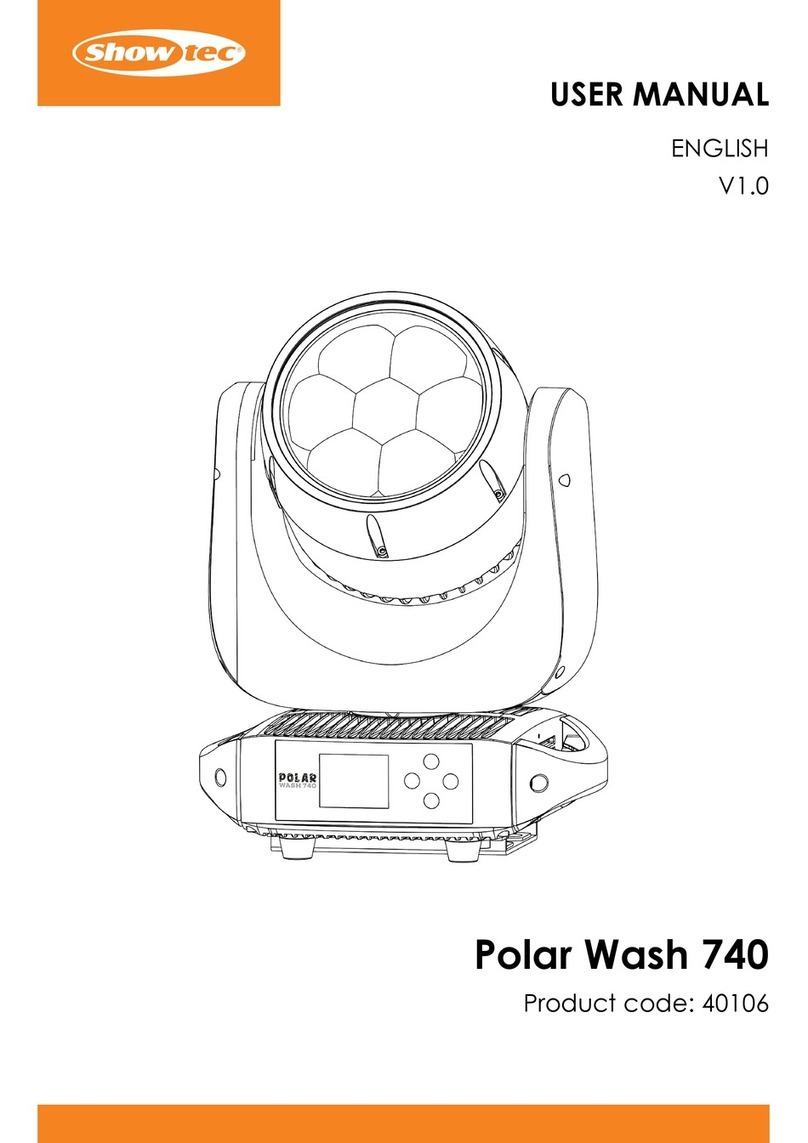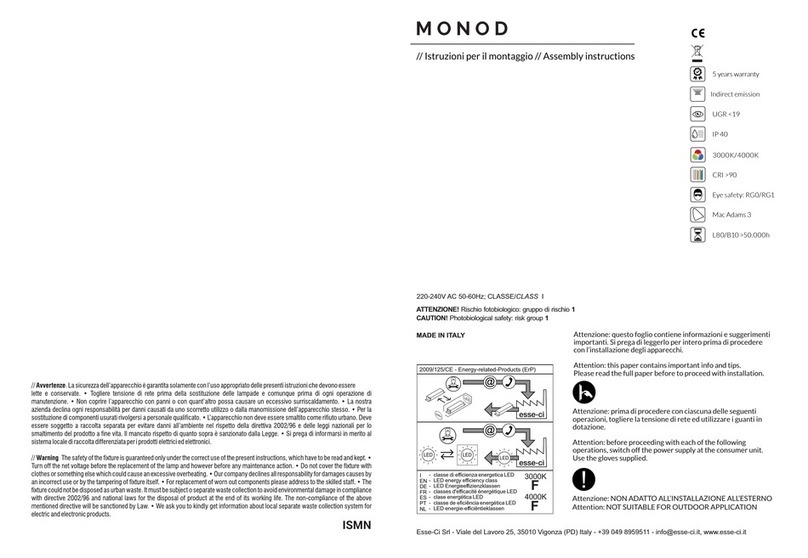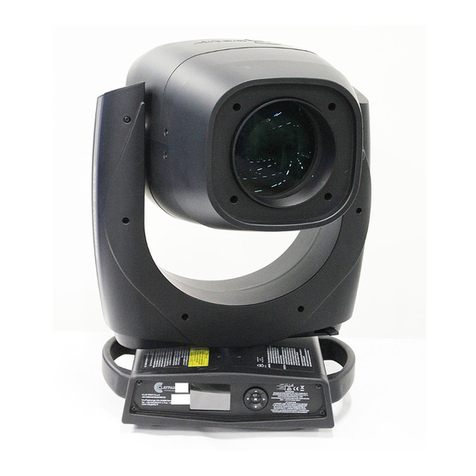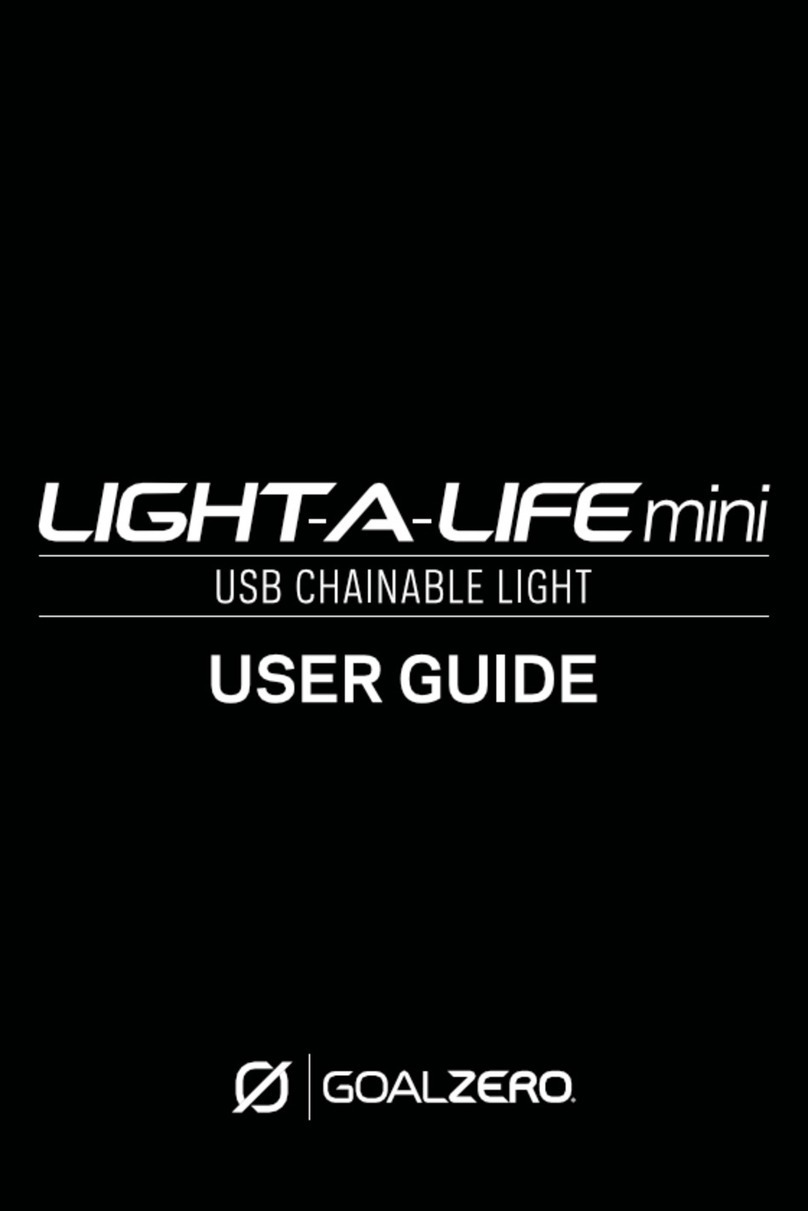Solaris FLARE User manual

Solaris Flare / Flare Jr. user manual version 9.1 111215
1
Operation Manual

Solaris Flare / Flare Jr. user manual version 9.1 111215
2
TABLE OF CONTENTS
1. INTRODUCTION ..........................................................................................................................3
Product Overview ...............................................................................................................3
What is Included .................................................................................................................3
Unpacking Instructions ......................................................................................................3
Power Requirements ..........................................................................................................3
Frequency Setting ...............................................................................................................3
Safety Instructions ..............................................................................................................4
Technical Features .............................................................................................................4
2. SETUP .........................................................................................................................................5
Fuse Replacement ..............................................................................................................5
Fixture Linking ....................................................................................................................5
DMX Data Cable .................................................................................................................5
Cable Connectors ...............................................................................................................6
3-Pin to 5-Pin Conversion Chart .........................................................................................6
Setting up DMX Serial Data Link ........................................................................................7
Fixture Mounting / Rigging ..................................................................................................7
3. OPERATING INSTRUCTIONS ...................................................................................................8
Control Panel Navigation ....................................................................................................8
Menu Map –Flare ...............................................................................................................9
Menu Map –Flare Jr. ........................................................................................................10
Menu Function Description ...............................................................................................11
Basic Mode .......................................................................................................................16
Strobe Modes ...................................................................................................................17
Strobe-Only Mode .............................................................................................................18
Advanced Modes ..............................................................................................................19
Pixel Locations –Flare .....................................................................................................21
Pixel Locations –Flare Jr. ...............................................................................................22
Advanced RGB Strobe DMX ............................................................................................22
Advanced RBGW Strobe DMX .........................................................................................23
Manual Function ...............................................................................................................25
4. APPENDIX ................................................................................................................................27
Basics of DMX Control ......................................................................................................27
General Maintenance .......................................................................................................27
Limited Warranty ...............................................................................................................27
Return Procedure .............................................................................................................28
Contact Information ..........................................................................................................28
Technical Specifications –Flare .......................................................................................29
Technical Specifications –Flare Jr. ..................................................................................30
Important: Read this manual before powering or installing the unit. Follow the safety precautions
listed herein. Observe all warnings in this manual and those printed on the unit.

Solaris Flare / Flare Jr. user manual version 9.1 111215
3
1. INTRODUCTION
PRODUCT OVERVIEW
Solaris Flare and Flare Jr are combination wash/strobe/blinders with up to 1000 Watts of LED RGBW brightness,
instantaneous color mixing, and 1200Hz refresh rate for smooth on-camera dimming. One Solaris Flare or Flare
Jr. does the job of many conventional LED fixtures, saving setup time and labor.
Simultaneous color wash, strobe, and blinder in one fixture!
Up to 1000 Watt brightness in a single LED fixture.
Produces powerful “organic” light, like one giant LED
Instantaneous RGBW color mixing
1200Hz refresh rate.
Pixel-map feature –up to 12 (Flare) or 4 (Flare Jr.) discrete, individually-controlled LED sections.
WHAT IS INCLUDED
1x Solaris Flare or Flare Jr.
1x Power cable
1x User Manual
UNPACKING INSTRUCTIONS
Upon receipt of the fixture, carefully unpack the carton and check the contents to ensure that all parts are
present and in good condition. Notify the shipper immediately and retain packing material for inspection if any
parts appear to be damaged from shipping or if the carton itself shows signs of mishandling. Save the carton
and all packing materials. In the event that a fixture must be returned to the factory, it is important that the fixture
be returned in the original factory box and packing.
POWER REQUIREMENTS
Before powering the unit, make sure the line voltage is within the range of accepted voltages. This fixture
accommodates 100-240VAC, 50/60Hz. All fixtures must be powered directly from a switched circuit and cannot
be operated with a rheostat (variable resistor) or dimmer circuit, even if the rheostat or dimmer channel is used
solely as a 0-100% switch.
When powered up, Solaris performs a preprogrammed internal test. On initial power-up the factory default DMX
address appears on the display screen and Solaris is ready for operation. After initial power-up, the last-saved
DMX address will appear.
FREQUENCY SETTING
Depending on location, change the Default Frequency setting to match the mains power (e.g., US and Canada
should be set at 60Hz). Proper frequency setting will ensure minimum amount of visible artifacts when using
Solaris on camera.

Solaris Flare / Flare Jr. user manual version 9.1 111215
4
SAFETY INSTRUCTIONS
Please keep this Operation Manual for future reference. If unit is sold to another user, make sure they also
receive this instruction booklet.
Ensure fixture is connected to proper voltage, and that line voltage is not higher than that stated on the
fixture.
Make sure there are no flammable materials close to the unit while operating.
Always disconnect from the power source before servicing or fuse replacement. Always use the fuse
specified in this manual.
Always use a safety cable when hanging fixture overhead.
Maximum ambient temperature (Ta) is 40°C (104°F). Do not operate fixture at temperatures above this
rating.
In the event of a serious operating problem, stop using the unit immediately. Repairs must be carried out by
trained, authorized personnel. Contact the nearest authorized technical assistance center. Only OEM spare
parts should be used.
Do not connect the device to a dimmer pack.
Make sure power cord is never crimped or damaged.
Never disconnect power cord by pulling or tugging on the cord.
Avoid direct eye exposure to the light source during operation.
Caution! There are no user serviceable parts inside the unit. Do not open the housing or attempt any
repairs yourself. In the unlikely event your unit may require service, please contact your distributor.
Technical Features / Description
Flare: 96 10W RGBW Cree®LEDs, divided into 2, 3, 4, 6 or 12 pixels
Flare Jr: 32 10W RGBW Cree LEDs, divided into 1, 2, or 4 pixels
Variable intensity control 0-100% in 8bit or 16bit control modes
Beam spread: 36°
Refresh rate: 1200HZ
Flash Duration control 0-650ms flashes per second
Flash Rate control 0-16.7Hz (50Hz) / 0-20Hz (60Hz)
Continuous blinder/wash effect
Flash intensity curve selection
User definable fades
LCD control panel display with 4 control buttons
Please read these instructions carefully. This user guide
contains important information about the installation, usage and
maintenance of this fixture.

Solaris Flare / Flare Jr. user manual version 9.1 111215
5
2. SETUP
FUSE REPLACEMENT
Flare and Flare Jr. use a 12A 250V slow-blow fuse (5x20mm). To replace fuse:
1. With a screwdriver turn the fuse cap counter-clockwise to remove fuse cap with fuse.
2. Replace fuse attached to fuse cap.
3. Reinsert fuse cap with new fuse and tighten clockwise.
FIXTURE LINKING
A DMX data link is needed to operate one or more fixtures via a DMX-512 lighting console. The combined
number of channels required by all the fixtures on a DMX data link determines the number of fixtures the DMX
data link can support.
Important: Fixtures on a DMX data link must be daisy-chained in one single line. To comply with the
EIA-485 standard, no more than 32 devices should be connected on one data link. Connecting more
than 32 fixtures on one serial data link without the use of a DMX optically-isolated splitter may result in
deterioration of the digital DMX signal.
Maximum recommended DMX data link distance between fixtures: 984 ft. (300 meters).
DMX DATA CABLE
Use a ProPlex® DMX cable or equivalent which meets the specifications for EIA RS-485 applications. Standard
microphone cables cannot transmit DMX data reliably over long distances. The data cable must have the
following characteristics:
2-conductor twisted pair plus a shield
Max. capacitance between conductors –30 pF/ft.
Max. capacitance between conductor and shield –55 pF/ft.
Max. resistance of 20 ohms / 1000 ft.
Nominal impedance 100-140 ohms
POWER LINKING –FLARE JR.
The Flare JR has a Neutrik®PowerCon IN and THRU connection allowing power linking (daisy-chaining).
Depending on the power provided, you should not exceed the power threshold. Max. 5 units 10-120V; max. 10
units 208-240V.
Disconnect the power cord before replacing the
fuse. Always replace with the correct fuse type.

Solaris Flare / Flare Jr. user manual version 9.1 111215
6
CABLE CONNECTORS
Cabling must have a male XLR connector on one end and a female XLR connector on the other end.
DMX connector configuration
CAUTION: Do not allow contact between the common and the fixture’s chassis ground. Grounding the
common can cause a ground loop, and your fixture may perform erratically. Test cables with an ohm
meter to verify correct polarity and to make sure the pins are not grounded or shorted to the shield or
each other
3-PIN TO 5-PIN CONVERSION CHART
If using a console with a 3-pin DMX output connector, a 3-pin to 5-pin adapter is needed. The chart below details
a proper cable conversion:
3-PIN TO 5-PIN CONVERSION CHART
Conductor
3 Pin Female (output)
5 Pin Male (Input)
Ground / Shield
Pin 1
Pin 1
Data ( -) signal
Pin 2
Pin 2
Data ( + ) signal
Pin 3
Pin 3
Do not use
Do not use
Do not use
Do not use

Solaris Flare / Flare Jr. user manual version 9.1 111215
7
SETTING UP A DMX SERIAL DATA LINK
1) Connect the male 5-pin XLR connector of the data cable to the female 5-pin XLR output of the DMX console.
Connect the other end of the data cable (female 5-pin XLR) to the male 5-pin XLR connector located on the
Solaris Flare.
2) Connect from the fixture output as stated above to the input of the following fixture, and so forth.
3) Continue linking until the last fixture is connected in your DMX signal data chain.
FIXTURE MOUNTING
Orientation
Flare and Flare Jr. fixtures may be mounted in any position. Always make sure there is adequate room for
ventilation. Do not obstruct unit’s fan or vents.
Support Stand
Always use a professional stand rated to support weight greater than the fixture (see technical specifications).
Attach a TVMP spigot to the yoke of the Flare or Flare Jr. and mount on the stand.
Rigging –Always consult a certified rigging specialist before suspending any fixture overhead!
Use ProBurger®couplers or equivalent C- or O-type clamps for attaching to truss. It is
important never to obstruct the fan or vents pathway. Adjust the angle of the fixture by
loosening both knobs and tilting the fixture. After finding the desired position, retighten
both knobs.
Always use safety cables!
When selecting installation location, consider routine maintenance.
Never mount fixture where it will be exposed to moisture, high humidity,
extreme temperatures, or restricted ventilation.

Solaris Flare / Flare Jr. user manual version 9.1 111215
8
3. OPERATING INSTRUCTIONS
CONTROL PANEL NAVIGATION
Access control panel functions using the four control panel buttons located directly underneath the LCD Display.
The Control Panel LCD Display shows the menu items selected from the menu map (see page 9). When a
menu function is selected, the display will show the first available option for the selected menu function. To
select a menu item, press <MENU>.
Press and hold the <MENU> button to scroll through the top level menu items. This is the top of the menu map.
Use the <Up> and <Down> buttons, located to the right of the LCD screen, to navigate the menu map and menu
options. Press the <MENU> button to access the menu function currently displayed or to enable a menu option.
To return to the top of the menu map or menu without changing the value, press the < X > button.
Main Menu Functions: Flare
DMX Address –DMX address selection
Control –Control mode selection menu
Manual –Manual Control
Demo –Demonstration scenes
Config –Configuration Menu
Main Menu Functions: Flare Jr.
DMX Address –DMX address selection
DMX Source –Wireless or wired
Control –Control mode selection menu
Manual –Manual Control
Demo –Demonstration scenes
Config –Configuration Menu
During normal operation, the Control Panel LED Display indicates DMX start address. When the DMX signal is
not connected, or if the Flare is not receiving a DMX signal, the address blinks RED.

Solaris Flare / Flare Jr. user manual version 9.1 111215
9
MENU MAP -FLARE

Solaris Flare / Flare Jr. user manual version 9.1 111215
10
MENU MAP –FLARE JR.

Solaris Flare / Flare Jr. user manual version 9.1 111215
11
MENU FUNCTION DESCRIPTION
DMX Address –To set the required DMX address, open the Main Menu:
1) Press and hold <MENU> button to open the Main Menu.
2) Use <UP> and <DOWN> buttons to find the DMX address function.
3) Press <SELECT> button to access the DMX address value change submenu.

Solaris Flare / Flare Jr. user manual version 9.1 111215
12
4) Use <UP> and <DOWN> buttons to set necessary DMX address value (e.g. 198).
5) Use <SELECT> button to confirm the new DMX address.
6) Main Menu will appear. Press <EXIT> button to return fixture at work-state.
7) The work-state control panel display shows current DMX address (in this example 198). Additional info is
displayed under the DMX address: Selected control mode, channels used by this mode, and occupied DMX
addresses (DMX footprint.)
In this example MODE: RGB pix:1 (10ch) DMX footprint: 198 - 202 (meaning: RGB control mode with 1 pixel
using 10 DMX channels uses DMX 198 to 207).
DMX Source –This device supports two DMX controlling modes through wired connection (DMX cable w/XLR 5-
pin connector), or wireless DMX signal through wireless (Flare Jr. only).
To set required DMX source, you must:
1) Press and hold <MENU> button to open the Main Menu.
2) Use <UP> and <DOWN> buttons to find the DMX Source submenu and press <SELECT> button.

Solaris Flare / Flare Jr. user manual version 9.1 111215
13
3) Choose from 2 options ”DMX IN” or ”WIRELESS” and press <SELECT> button to confirm your selection.
3.1) If ”DMX IN” option is selected, and there is an input signal, the home screen will display non-blinking
address number (in this case: ”1”) and ”DMX src: DMX IN”
3.2) If ”WIRELESS” option is selected, return to home screen. Under DMX src ”WIRELESS” will appear but the
address number (in this case ”1”) and wireless symbol might be blinking if the wireless connection is not
set-up. Also, on the right upper corner ”NO LINK” will be displayed.

Solaris Flare / Flare Jr. user manual version 9.1 111215
14
4) To set-up wireless connection, activate the built-in wireless receiver. If the ”RF LINK” LED is blinking,
press the connection button once, located on the front panel of the wireless transmitter device. This will
pair the wireless transmitter with all unpaired Flare Jrs. found in the wireless range.
After completing the above the Flare Jr main screen will look like one of these:
If the wireless symbol is yellow, a wireless connection has been made but no DMX signal is present.
Check the input DMX connections on the wireless transmitter to solve this problem.
If the wireless symbol is green, the built-in wireless receiver has an input signal and the system is ready
for use.
To break the wireless link with all the Flare Jrs:
Press the connection button located at the wireless transmitter front panel. This will break the
connection with all wireless devices connected in the wireless link.
To break the wireless link with an individual Flare Jr.:
Press and hold the button at upper right of the Flare Jr. LCD (indicated with red square below). This will
break the connection with the particular Flare Jr.

Solaris Flare / Flare Jr. user manual version 9.1 111215
15
Control –Flare and Flare Jr. control mode selections. Flare and Flare Jr. are two fixtures in one (a strobe
fixture, and a wash/blinder fixture). In each of the control modes, the fixture occupies varying numbers of DMX
channels and has different control channels. To enter the Control submenu, follow these steps:
1) Press and hold <MENU> button to open the Main Menu.
2) Use <UP>and <DOWN> buttons to find the Control submenu.
.
3) Press <SELECT> button to access the Control submenu.
4) Choose the correct Control Mode type, Basic or Advanced.
When the Control submenu is opened, there are two settings to choose from:
Basic –This mode allows for simple control of the fixture as a Blinder/Wash fixture, or as a Strobe.
Advanced –This mode allows for independent control of Blinder/Wash functions, and the Strobe functions. This
mode also allows for independent color and intensity control of every segment of LEDs independently.

Solaris Flare / Flare Jr. user manual version 9.1 111215
16
BASIC MODE
In Basic Mode, the fixture can be used as a wash/blinder, generic strobe, or color strobe.
The first modes are the RGB and RGBW modes in 8bit resolution or 16bit resolution.
The RGB modes are designed to automatically adjust the white LEDs according to the RGB mix coming from the
lighting controller.
The RGBW modes are designed to give independent control of all 4 colors.
8 bit control uses one DMX channel for each color, and 16 bit control allows for two DMX channels of control to
give the lighting controller more steps of dimming.
Mode
Channel
DMX values
Preset
Function
RGB
8bit
1
0 - 255
0 - 100
Red Intensity
2
0 - 255
0 - 100
Green Intensity
3
0 - 255
0 - 100
Blue Intensity
RGB
16bit
1
0 - 255
0 - 100
Red Intensity HI Byte
2
0 - 255
0 - 100
Red Intensity LOW Byte
3
0 - 255
0 - 100
Green Intensity HI Byte
4
0 - 255
0 - 100
Green Intensity LOW Byte
5
0 - 255
0 - 100
Blue Intensity HI Byte
6
0 - 255
0 - 100
Blue Intensity LOW Byte
Mode
Channel
DMX values
Preset
Function
RGBW
8bit
1
0 - 255
0 - 100
Red Intensity
2
0 - 255
0 - 100
Green Intensity
3
0 - 255
0 - 100
Blue Intensity
4
0 - 255
0 - 100
White Intensity
RGBW
16bit
1
0 - 255
0 - 100
Red Intensity HI Byte
2
0 - 255
0 - 100
Red Intensity LOW Byte
3
0 - 255
0 - 100
Green Intensity HI Byte
4
0 - 255
0 - 100
Green Intensity LOW Byte
5
0 - 255
0 - 100
Blue Intensity HI Byte
6
0 - 255
0 - 100
Blue Intensity LOW Byte
7
0 - 255
0 - 100
White Intensity HI Byte
8
0 - 255
0 - 100
White Intensity LOW Byte

Solaris Flare / Flare Jr. user manual version 9.1 111215
17
STROBE MODES
Four channels control the functions of the strobe parameter: Strobe Intensity, Strobe Duration, Strobe Rate and
Strobe FX.
There are a number of effects that also use the strobe rate and duration controls to affect the effect’s look.
Please experiment to find the right duration and rate for your application.
Flash intensity
0 - 5
0 - 2
Blackout
6 - 255
3 - 100
Intensity level
Flash duration
0 - 254
0 - 99
0 - 650ms (50Hz AC)
255
100
HYPER
Flash rate
0 - 5
0 - 2
No flash
6 - 255
3 - 100
0.5 - 25Hz (50Hz AC); 0.6 - 30Hz (60Hz AC)
Flash effects
0 - 4
0 - 2
No effect
5
3
Wash Override (only available in RGB Strobe and RGBW Strobe modes) 1
6 - 42
4 -16
Ramp up
43 - 85
17 - 33
Ramp down
86 - 128
34 - 50
Ramp up - down
129 - 171
51 - 67
Random
172 - 214
68 - 84
Lighting
215 - 240
85 - 92
Spikes
241 - 245
93 - 95
Burst (use Rate at full) 2
246 - 250
96 - 98
"Meltdown" Random Pixels w/ Solid Background 3
251 - 255
99 - 100
"Meltdown" Random Pixels w/ Burst Background4
Notes:
1) In RGB Strobe and RGBW Strobe modes, a feature in the Strobe FX channel allows the Flare to become a
temporary wash/blinder fixture. If the Strobe FX channel is set to DMX value 5, the Strobe color channels
become strobe wash/blinder color channels.
For example, the Flare can be strobing in White, and then quickly changed to a Blue Wash fixture.
a) White strobing: Strobe Color Channels @ DMX 255, Strobing channels as desired.
b) Blue Wash: Strobe Color channels to Blue-only @ DMX 255; Strobe FX @ DMX 5; the other strobe
channels are ignored.
2) When burst is activated, use the rate channel at FULL to access a hyper-speed strobe

Solaris Flare / Flare Jr. user manual version 9.1 111215
18
3) When Meltdown with Solid background is active, the Strobe Color determines the random pixel color, and the
background color is determined by the pixel colors after the strobe fx channels. There is no background color
when in RGB Strobe and RGBW Strobe mode. The background pixels are solid-on in this mode. The
foreground strobe is randomized, not achievable in any other mode, and is difficult to reproduce with most
DMX controllers at this rate.
4) When Meltdown with Burst background is active, the Strobe Color determines the random pixel color, and the
background color is determined by the pixel colors after the strobe fx channels. There is no background color
when in RGB Strobe and RGBW Strobe mode. The background pixels run at burst speed in this mode. The
foreground strobe is randomized which is not achievable in any other mode, and is difficult to reproduce with
most DMX controllers at this rate.
ASYNC STROBO (Found in the CONFIG Menu)
The purpose of this mode is to make quick one-shot effects within the Strobe FX channel much easier.
If the Strobe Rate and Duration channels are set at zero, and the FX channel is at a value for one of the strobe
effects, any change in the strobe intensity channel will cause the Strobe FX effect to one-shot at this intensity
value. This feature makes firing an effect once very easy, reducing your number of cues by half.
Note: When in this mode, any change to the strobe intensity channel within DMX values 1-255 will cause the
Flare to fire a single shot of either an effect or a single strobe at the intensity value selected.
STROBE-ONLY MODE
In this mode, the fixture can act as a generic 4-channel Strobe.
In this mode, strobe color can be selected.

Solaris Flare / Flare Jr. user manual version 9.1 111215
19
Strobe Only
Mode
1
0 - 255
0 - 100
Strobe Intensity
2
0 - 255
0 - 100
Strobe Duration
3
0 - 255
0 - 100
Strobe Rate
4
0 - 255
0 - 100
Strobe FX
ADVANCED MODES
This control submenu setup is for advanced users allowing control of both Strobe Color and Strobe
Intensity/Duration/Rate/FX independently of Wash/Blinder background color. This also allows independent
control individual segments of 8 LEDs in the array.
RGB or RGBW control can be selected, plus the desired pixel segments.
The LED segments are comprised of 8 LEDs. There are two segments of 8 LEDs per row. There are 6 rows of
LEDs, for a total of 12 controllable segments. The more segments chosen, the more sets of RGB or RGBW will
follow the Strobe Color and Strobe Control channels.
Choose how many sections (PIXELS) of control after choosing color mode (RGB or RGBW).

Solaris Flare / Flare Jr. user manual version 9.1 111215
20
Other manuals for FLARE
1
Table of contents
Other Solaris Light Fixture manuals
Popular Light Fixture manuals by other brands
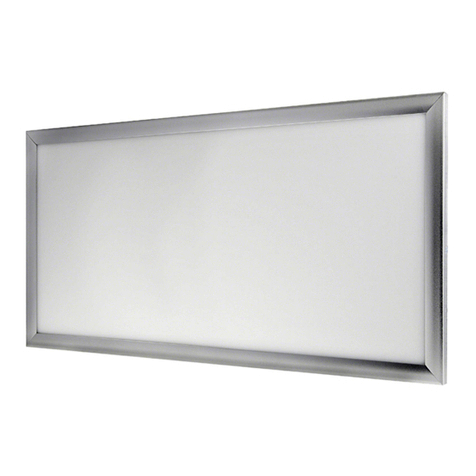
superbrightleds
superbrightleds LP-NW3030-35-12V user manual
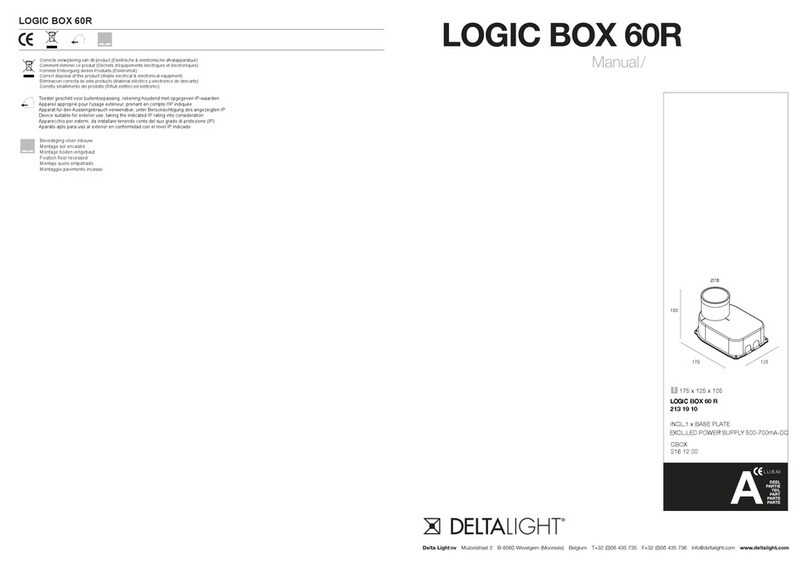
Delta Light
Delta Light LOGIC BOX 60R manual
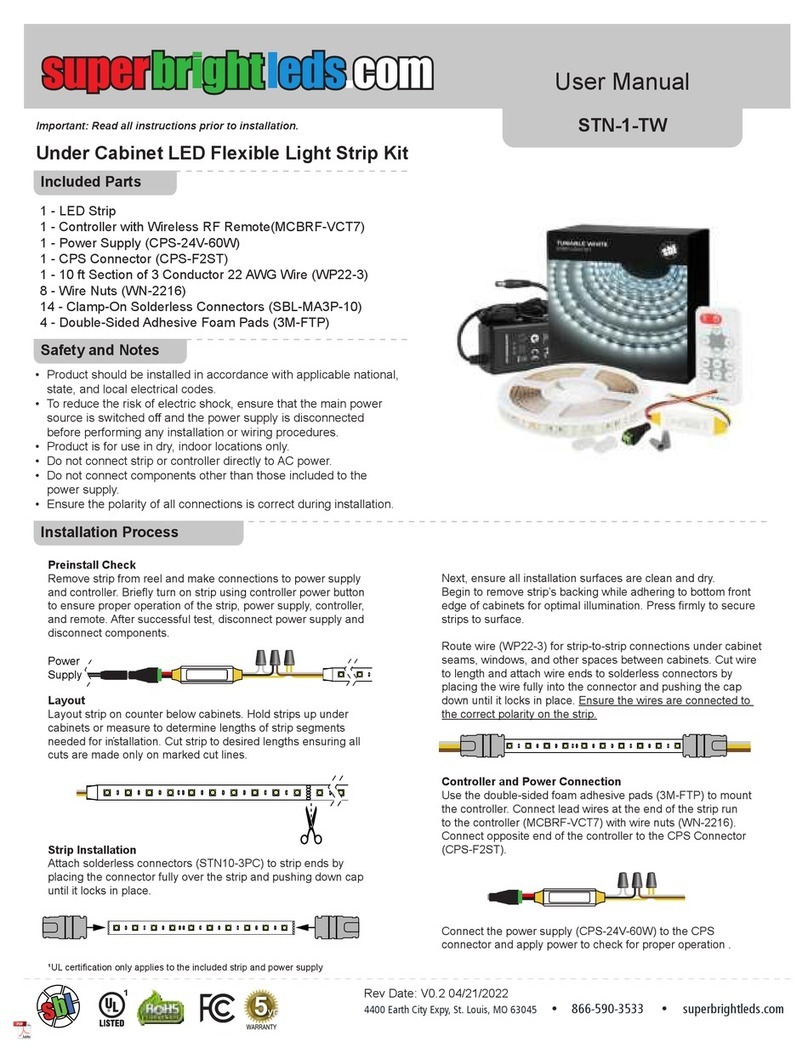
superbrightleds
superbrightleds STN-1-TW user manual
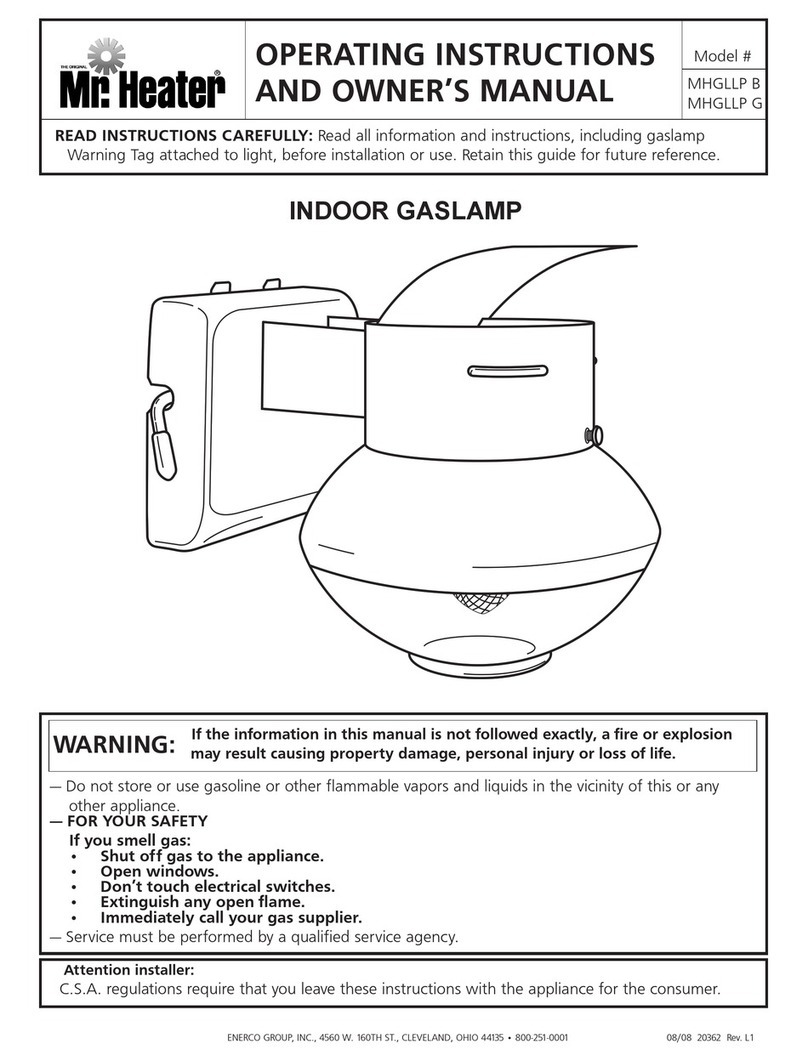
MrHeater
MrHeater MHGLLP B Operating instructions and owner's manual
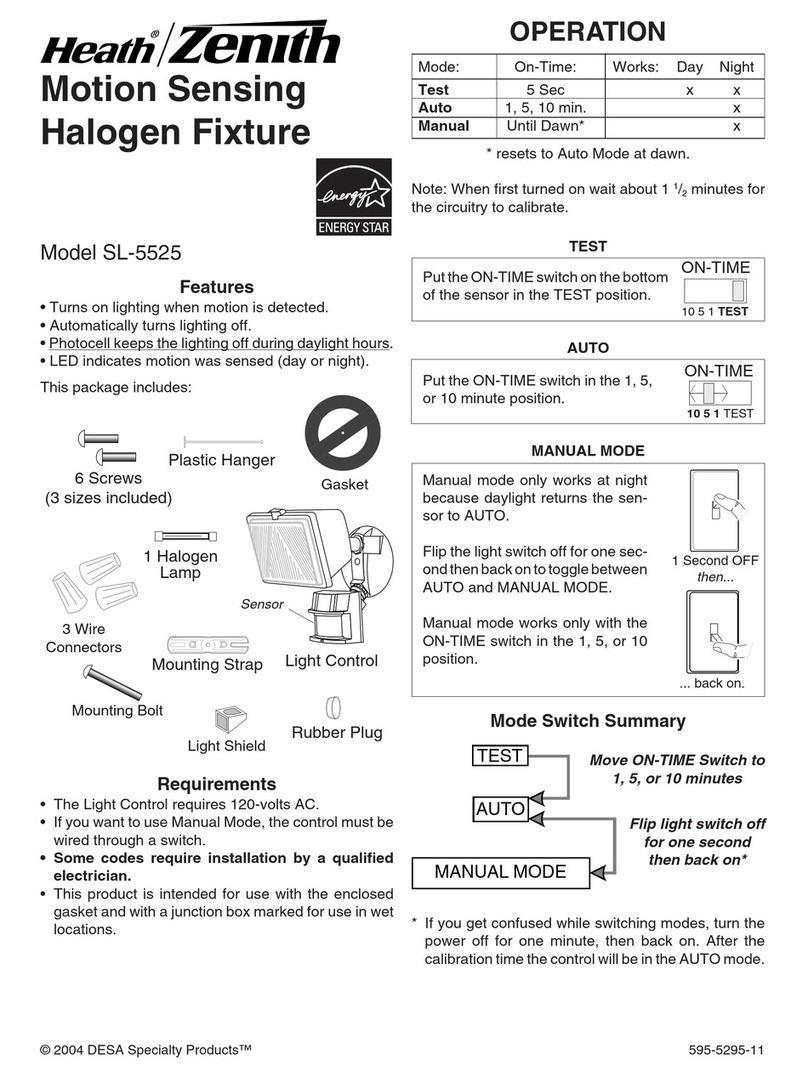
Heath Zenith
Heath Zenith SL-5525 user manual
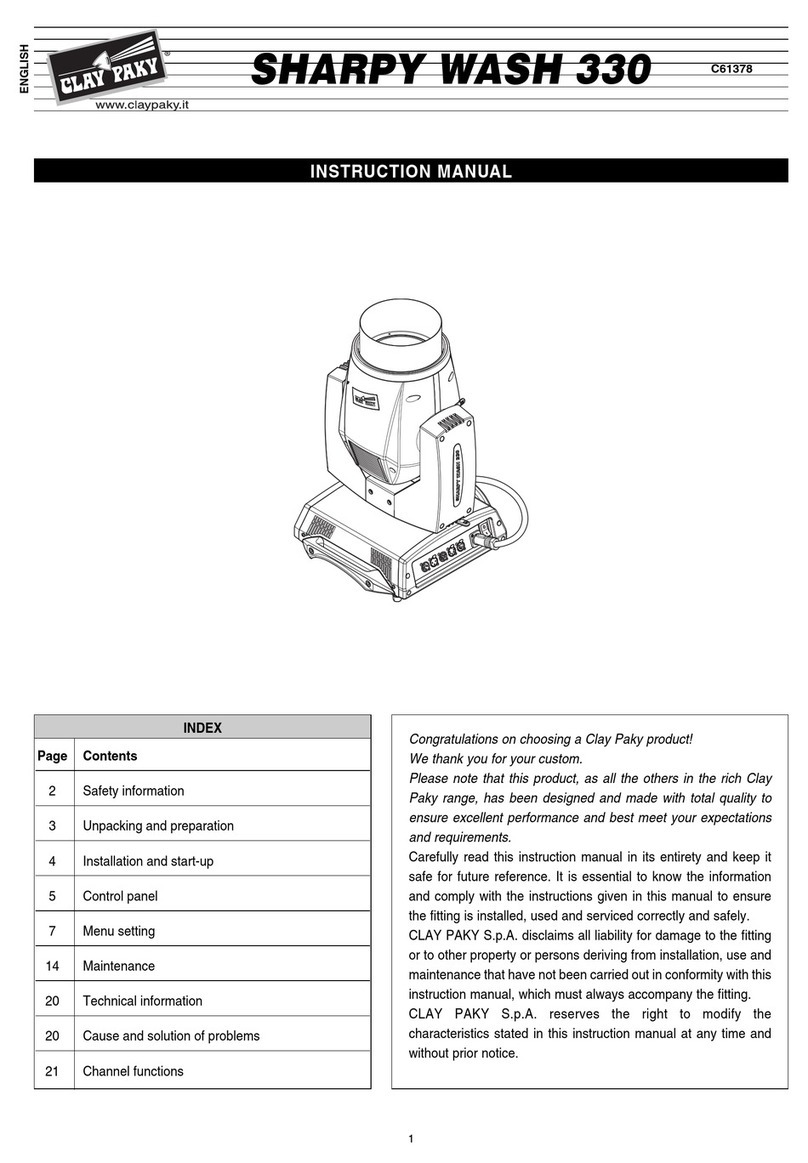
Claypaky
Claypaky SHARPY WASH 330 instruction manual
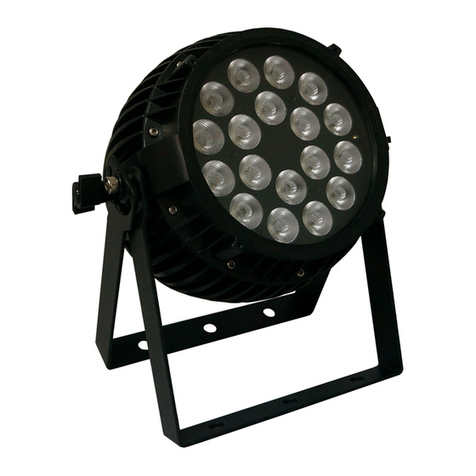
Mark
Mark SUPERLED 818 IP user manual
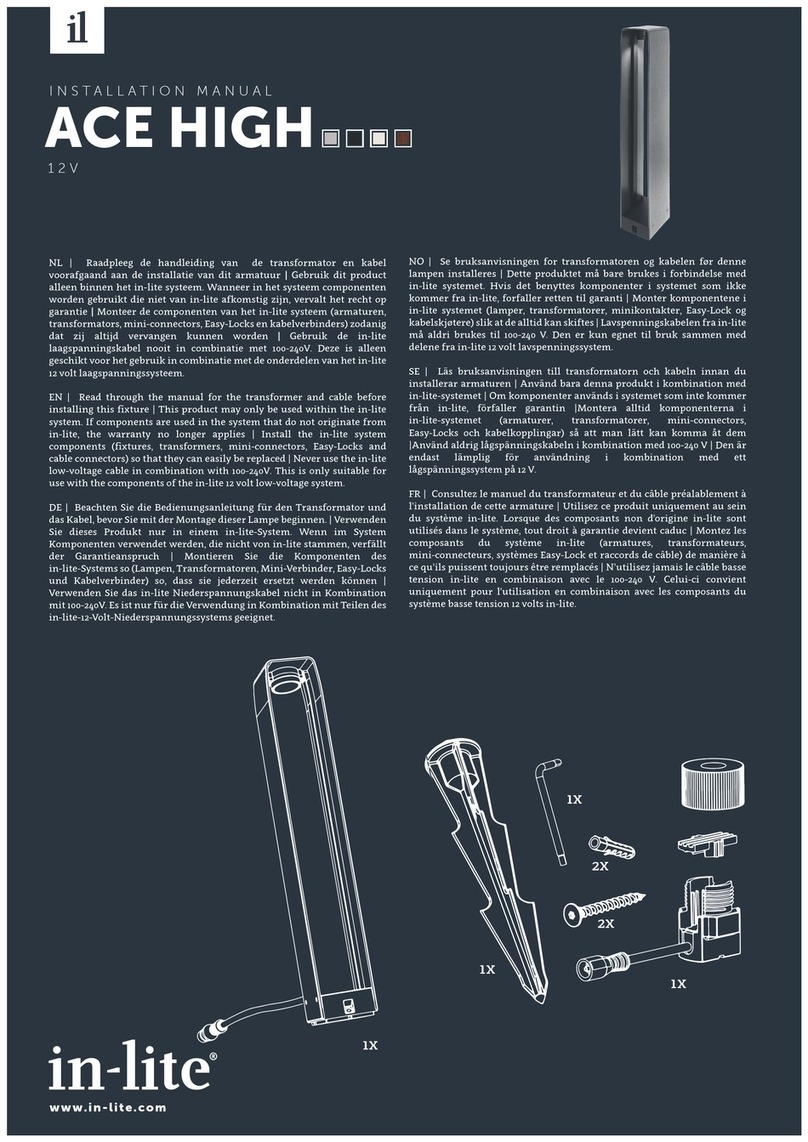
Inlite
Inlite ACE HIGH installation manual

afx light
afx light BAR LED 412 instruction manual

Axis
Axis AXIS T90D20 IR-LED installation guide

Heitronic
Heitronic 39275 Installation and operating instructions
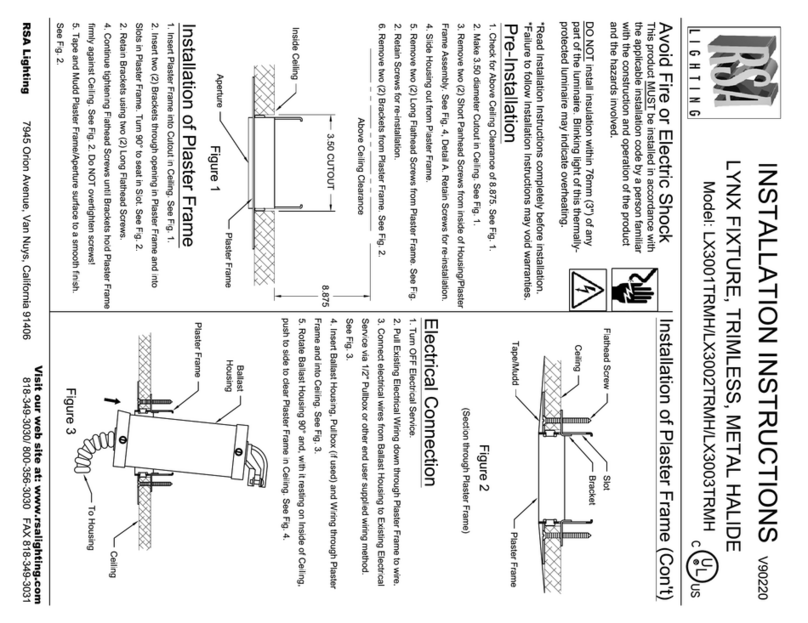
RSA Lighting
RSA Lighting LYNX LX3002TRMH installation instructions
